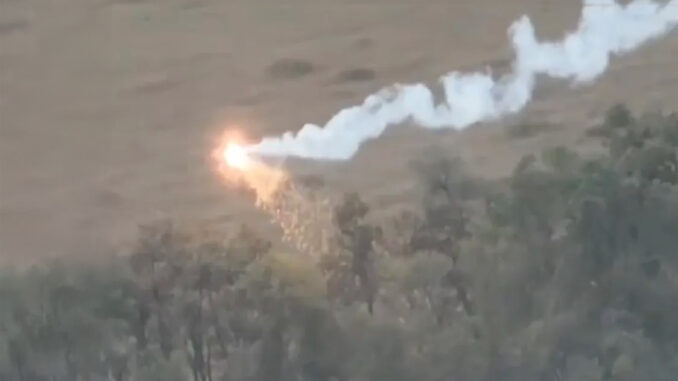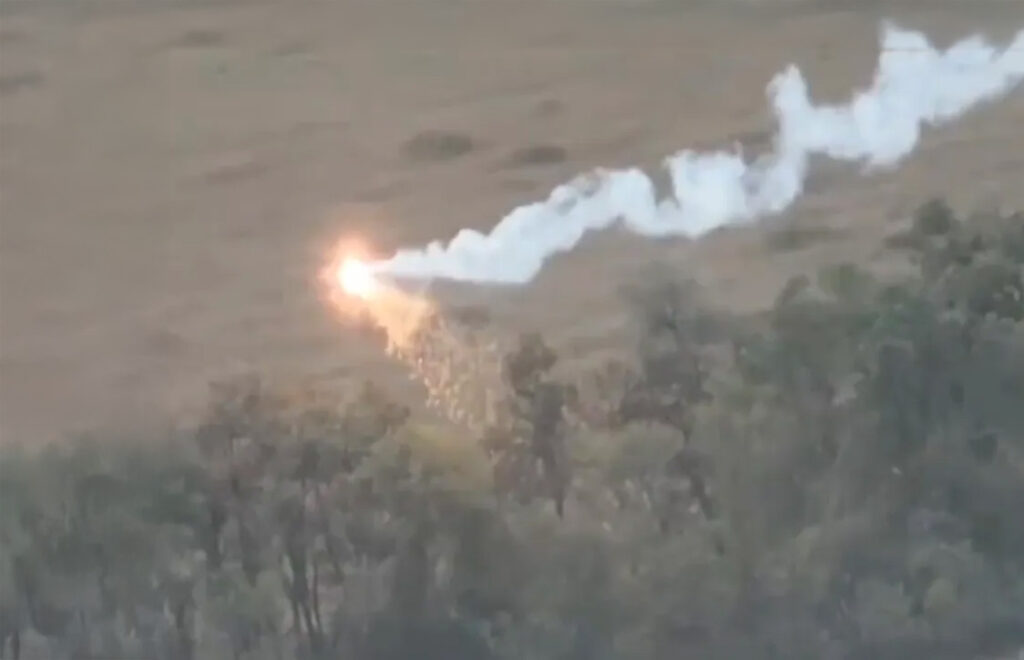
Thermal drones, or ‘dragon drones’, deployed by Russia and Ukraine are revolutionising warfare with increased precision and devastating thermal effects.
The use of drones equipped with thermite in the war in Ukraine has marked a new era in modern warfare. These drones, dubbed ‘dragon drones’, disperse thermite, a compound capable of burning at more than 2,450 degrees Celsius, over enemy positions. This technology makes it possible to target large areas with great precision while minimising the risks for the operator. Both sides, Russia and Ukraine, quickly adopted this technology, increasing the lethality and effectiveness of attacks. This development marks a turning point in drone warfare, with major implications for the future of armed conflict.
Thermal drones: a new generation of incendiary weapons
Thermal drones, also known as ‘dragon drones’, have become a key element in the fighting in Ukraine. Using thermite, a compound of aluminium and iron oxide, these drones are capable of starting fires at extremely high temperatures, reaching 2,450 degrees Celsius. This intense heat makes it possible to burn enemy positions, particularly in trenches and wooded areas, considerably reducing natural and artificial shelters.
Thermite has historically been used in weapons such as grenades and artillery shells, but adapting this technology to drones represents a significant advance. Unlike traditional weapons, drones can fly over targeted areas and drop thermite with greater precision. The use of this type of weapon in Ukraine shows that drones are becoming essential players on the modern battlefield.
Consequences on the ground
One of the main consequences of the use of thermal drones is the reduction in areas of refuge for troops. By burning vegetation and rendering trenches uninhabitable, these drones further expose soldiers, making defensive positions more vulnerable to further attack. In addition, thermite’s ability to deplete targets of oxygen creates more difficult combat conditions for forces on the ground.
In addition to the physical effects, thermal drones also have a significant psychological impact. The constant threat of drones flying overhead and starting fires without warning increases the stress on soldiers and can affect their morale. What’s more, the fact that there is no direct risk to the operator makes this weapon all the more formidable, as it allows repeated attacks without putting the drone pilots in danger.

The evolution of military tactics with thermal drones
Thermal drones are not just a technological innovation; they symbolise a tactical shift in modern warfare. The deployment of drones for broad-spectrum firefighting is a first in the history of conflict. The advantages are many: long range, greater precision and, above all, the absence of risk for operators. These tactical advantages are enhanced by the possibility of coordinated operations, where several drones can be used simultaneously to maximise the destructive effect.
For example, a typical thermite attack can destroy trenches and defensive positions over a wide area, where conventional weapons often fail to inflict significant damage. This changes the way troops organise their positions, and means that defensive strategies have to be adjusted to take account of this new threat.
In addition, the reduced cost of drones compared with fighter aircraft or artillery makes these weapons accessible on a large scale. A combat drone equipped with thermite generally costs less than €100,000, compared with several million for a fighter plane, enabling both sides to multiply attacks without suffering a rapid financial drain.
Implications for the future of armed conflict
The increasing use of thermal drones in Ukraine foreshadows a change in the dynamics of future conflicts. Not only do these drones offer superior military efficiency, but they also pave the way for new forms of asymmetric warfare, where technologically inferior forces can use drones to counter the material advantage of a better-equipped army.
Large-scale fires caused by thermal drones illustrate a trend towards forms of warfare that seek to maximise destructive effect with limited resources. The combination of drone technology and incendiary weapons, such as thermite, could also see increased development in urban conflicts, where precision and the ability to hit hidden targets are crucial.
In addition, these innovations could also influence the military doctrines of other nations. Thermal drones have the potential to be adopted by several countries because of their low cost and effectiveness. It is possible that we will see a proliferation of these weapons in future conflicts, not only in Eastern Europe, but also in regions where armed conflicts are frequent, such as the Middle East or Africa.
The growing use of thermite in modern conflicts
Historically, thermite has been used in weapons since the First World War, mainly in the form of incendiary grenades or explosive charges. However, its use in drones marks a significant turning point. In Syria, Russia had already used thermite ammunition in 2012 to target areas of armed resistance. In Ukraine, the use of thermite by Russia and Ukraine has been observed since the early months of the conflict.
Between February 2022 and April 2023, there were at least 82 documented attacks involving incendiary weapons in Ukraine, according to Human Rights Watch. These attacks were spread across seven different regions. Because thermite is used by both sides, it has become difficult to attribute responsibility for the attacks precisely.
These figures underline the growing importance of incendiary weapons in current conflicts, where the destruction of enemy equipment and fortified positions is taking on strategic importance. In addition, the use of these weapons poses new challenges in terms of humanitarian law, particularly with regard to the use of weapons with prolonged thermal effects on inhabited areas.
Towards a drone war?
The deployment of thermal drones marks a significant change in the way modern warfare is conducted. By making defensive positions more vulnerable and introducing a new dimension of incendiary effectiveness, these drones are transforming battlefields.
Ukraine and Russia are just the first examples of what could be a new generation of drone warfare, where emerging technologies, combined with existing weapons, offer unprecedented destructive possibilities. The implications of these changes are far-reaching, not only for today’s armed forces, but also for the way in which future conflicts will be planned and executed. Thermal drones could well be the vanguard of this evolution, ushering in a new phase in the art of warfare.
War Wings Daily is an independant magazine.